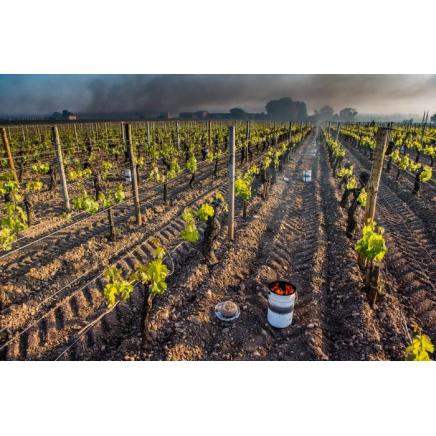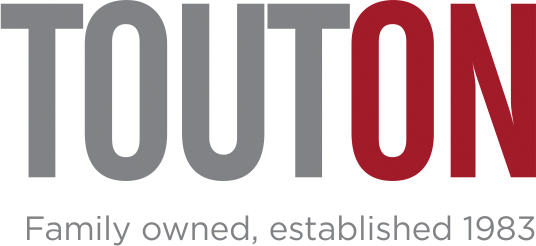The 2021 Frost Could Impact Harvest, Distribution and What You Pay for French Wine

The 2021 Frost Could Impact Harvest, Distribution and What You Pay for French Wine
Guillaume Touton and other offer insight to the recent Spring frosts
article originally featured in Beverage Industry Enthusiast May 26th 2021
When frosts arrived in French vineyards the week of April 5, initial reports suggested the entire 2021 vintage would be destroyed. Fortunately, it’s not as bad as that. Overall, in France, about 30% of the 2021 crop was destroyed, according to still-early government estimates. Smaller but similar hits were reported in Italy, Germany and Spain. It’s possible a second, smaller crop will appear on some French vines, but frost will affect the 2021 and 2022 vintages. Some vines in France hit by frost in 2017 or 2018 were just beginning to recover. Now, two weeks after the frost, the temperatures are above freezing, and the French government has announced a $1.2 billion emergency assistance program for vineyard and agriculture producers. The 2021 frost has not resulted in the overall crop and vineyard devastation of 1947, 1956, 1991, or even the destruction caused by rolling frosts in 2016, 2017 or 2019. How, then, will this year’s frost affect the price of French wine?At the moment, the U.S. wine market is immersed in widespread problems like the pandemic, 2020 vaccine delays, and lost or decreased bar and restaurant sales. Now that the tariffs have been paused, and many importers are buying again, the French wine industry faces shipment delays, container shortages, late arrivals and currency fluctuations. Frost is a lesser problem. “The prices shouldn’t jump due to frost,” says importer Franck Agostini, owner of Promex Wines and Franck’s Signature Wines. “On the contrary, at the moment they may fall for some and especially for Bordeaux, since some Asian and others European markets collapsed in sales, and exporters know that the U.S. will be the market to recover sales quicker than the others.” Based in Washington, D.C., Franck’s Signature Wines specializes in French bottles. “We had very busy recent days and orders,” he says. “I don’t think it is linked to frost fears. It is mostly thanks to bars and restaurants re-opening, spring, vaccine take-up in the U.S. and people wishing to enjoy wine after such a long hard time and a better lifestyle budget because of the Covid.”
Specialist importers are waiting to see how the upcoming 2020 Bordeaux en primeur campaign will fare. Prior to the frost, importers were not expecting price increases. “The prices need to be the same as last year, the market is still fragile,” says Jean-Sébastien Calvet of New York- and Bordeaux-based Aquitaine Wine Company. However, Marion Lopez, U.S. export manager for Crus et Domaines de France, believes prices will increase. “The question is, are the U.S. importers ready to pay more for the 2020 vintage?” According to Lopez, since the tariffs were paused, the priorities are the 2017 and 2018 wines sold as futures and now bottled. High-profile, high-price wines are being express air shipped to the U.S. in case tariffs return. Beyond Bordeaux, obstacles such as previous tariffs, Covid, frost and shipping are stacking up for French wineries, says Raylene Mallet of Cognac One in New York. So far, the situation is not influencing Cognac One’s purchases from mostly small-production boutique and family-run wineries, but “there is no doubt the industry will be impacted next year with the 2021 release,” says Mallet.
Guillaume Touton, founder and owner of Monsieur Touton, a wine import and distribution company, has also noticed the challenges. “I was expecting a break [following the tariffs] but we are not getting any break, prices are probably going higher,” says Touton. Plus, millions of French bottles arrived in the U.S. with the 25% tariff prior to the pause, “and they still need to be sold,” Touton says. Shipments are fraught. “On the Friday afternoon after the frosts of April 6 and 7, I tried to buy a container of Pinot Noir,” says Touton. “They said ‘No we cannot give you a price yet.’ ” If the frost renders the 2021 vintage into one with exceptionally little volume, “I could see going back to older stocks,” says Roy Cloud of Vintage ’59 Imports in Washington, D.C. “I could also see the world turning to countries that were not impacted, and/or turning to appellations that weren’t hit hard. Maybe at long last Alsace will see its revival.” Meanwhile, winemakers throughout France must navigate their changing climate. It was a precocious February and March that drew out the buds a month or so early in most regions of the country. In many points in Gascony, it was 73°F on February 23, and 24°F on April 7, says Olivier Bourdet-Pees, director of 600 small-acreage producers in the Plaimont cooperative. “For some, it was cataclysmic.” Plaimont’s post-frost market strategy is to get small domestic retailers all the wine they need. “They have suffered enough with Covid,” says Bourdet-Pees. “The U.S. will have what it wants, no allocation. Big French supermarkets will be on allocation.”
Due to the pandemic, many producers are just starting to bottle some of their 2018 wines. Some can’t afford to bottle their 2019 and 2020 selections, leaving generous volumes still in tank. “Some clearly told me that somehow… the frost will be a way to help a bit to ‘clear the market’ and that at least it happened before all the expenses it takes to maintain a vineyard until harvest,” says Christophe Chateau, marketing and media manager for Conseil Interprofessionnel de Vin de Bordeaux (CIVB), the Bordeaux wine council. Chateau believes that about 10% of Bordeaux producers were on the brink of failing before the frost. Now, he predicts more. “The magnitude of this freeze, as well as the health—Covid—and economic—Trump tax, etc.—context makes farms and winegrowers very vulnerable,” says Chateau. Some producers in pockets of the Loire had 13 nights of frost. Kevin Vigné of Cellier du Beaujardin in the Cher Valley encourages strategic thinking. “We are learning to look further ahead and know that behind every cloud there is a silver lining.” Great harvests are easy and financially beneficial. Devastating weather is expensive in both the immediate and eventual aftermaths. The legend in France is that frost is possible until the feasts of the Saints de Glace, the frost saints, May 11 to 13. Only time and the climate will tell.


